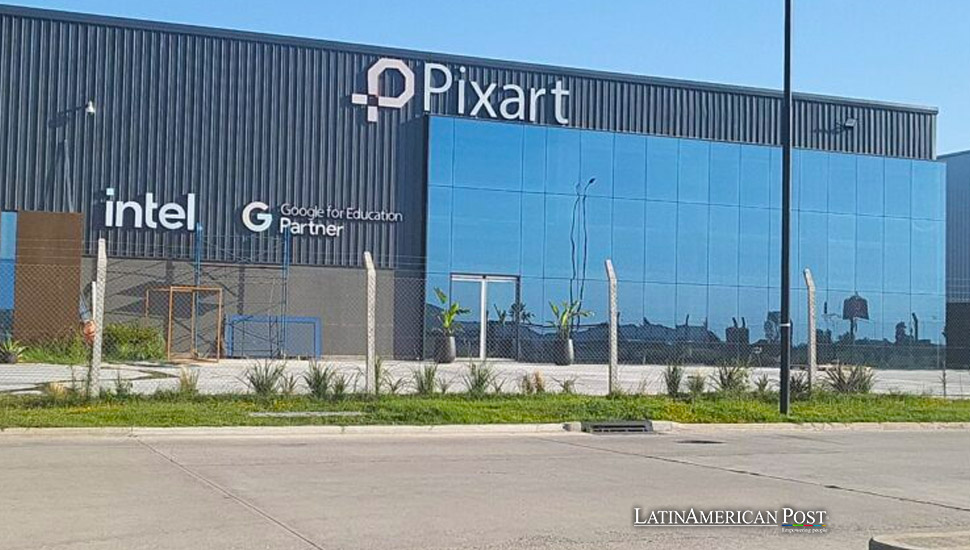Pixart Argentina and Qualcomm Plan Semiconductor Plant in Panama

Pixart Argentina and Qualcomm are exploring establishing a semiconductor plant in Panama. This move could significantly impact Latin America’s technology sector and create new opportunities for local employment and skills development.
Pixart Argentina, a leading software and hardware developer, and Qualcomm, a global leader in semiconductor production, are in discussions about opening a new manufacturing plant in Panama. This collaboration was announced by the Panamanian government, highlighting the potential benefits for the country’s burgeoning technology sector. The meeting between Julio Moltó, Panama’s Minister of Commerce and Industries, Gabriel Ortiz, CEO of Pixart Argentina, and Gabriel Dutra, Qualcomm’s Director for Latin America, marked a significant step towards making this project a reality.
The proposed plant would leverage Panama’s strategic location and economic stability to serve as a hub for expanding Pixart’s computer production, utilizing Qualcomm’s advanced semiconductor technology. According to Ortiz, Panama offers a unique platform to not only expand production but also distribute products efficiently across Latin America and the United States. The partnership aligns with Pixart’s ambition to grow its influence in the global market by tapping into Qualcomm’s technological expertise and Panama’s logistical advantages.
This potential expansion underscores Panama’s growing importance as a center for technological innovation in Latin America. The country’s inclusion in the U.S. Department of State’s list of critical partners for reinforcing the global semiconductor supply chain further solidifies its position as a strategic player in the tech industry.
The Impact of U.S. Semiconductor Policy
The collaboration between Pixart Argentina and Qualcomm is particularly significant in the context of the U.S. CHIPS and Science Act of 2022. This legislation aims to bolster the global semiconductor supply chain. Panama’s selection as one of the seven countries to participate in this initiative is a testament to its strategic importance. The CHIPS Act established the International Technology Security and Innovation Fund (ITSI Fund), which seeks to strengthen and diversify semiconductor manufacturing capabilities globally, including in Latin America.
The proposed plant in Panama would align with the goals of the CHIPS Act by enhancing the production of semiconductors and related technologies in a region that is increasingly vital to the global supply chain. Ortiz mentioned that the project’s initial phase would involve designing and assembling printed circuit boards, along with other components such as power supplies, keyboards, monitors, and disk handlers. The plant would also offer repair services for defective parts, making it a comprehensive facility for semiconductor manufacturing.
This development is not just about expanding production but also strategically positioning Panama within the global semiconductor market. As demand for semiconductors continues to rise, particularly in telecommunications, consumer electronics, and automotive industries, having a robust manufacturing base in Panama could provide a competitive edge for Latin America in this critical sector.
Economic and Educational Benefits for Panama
The establishment of a semiconductor plant by Pixart Argentina in Panama would have far-reaching implications for the country’s economy and workforce. Minister Moltó emphasized that the project would create significant employment opportunities, particularly in specialized areas in high demand globally. The development of such a facility would require a skilled workforce capable of handling the complexities of semiconductor manufacturing, which could lead to the creation of training programs and educational initiatives to upskill Panamanians.
Gabriel Ortiz of Pixart Argentina highlighted that their company’s presence in Panama would offer valuable learning opportunities for the local workforce. Panamanians would have the chance to gain expertise from industry veterans with over 30 years of experience in one of the world’s most demanding industries. This knowledge transfer is crucial for building a sustainable tech ecosystem in Panama, where local talent can be nurtured to meet the growing demands of the global semiconductor industry.
Moreover, the project could spur further investment in Panama’s technology sector, attracting other tech companies looking to capitalize on the country’s strategic location and growing reputation as a technology hub. This, in turn, could lead to a broader transformation of Panama’s economy, shifting it towards higher-value industries and reducing its reliance on traditional sectors.
Pixart Argentina and Qualcomm’s Legacy in Technology
Pixart Argentina and Qualcomm have long histories of innovation and leadership in the technology sector, making their partnership a powerful force for technological advancement in Latin America. Founded in 1998, Pixart Argentina has established itself as a leading developer of software and hardware, with the largest computer manufacturing facility in Latin America. The company’s commitment to innovation and quality has positioned it as a key player in the region’s tech industry.
Qualcomm, founded in 1985 and headquartered in San Diego, California, is a global leader in semiconductor technology, particularly in the field of wireless communications. The company holds a 39% market share in smartphone application processors and a 20% share in tablet processors, according to Strategy Analytics. Qualcomm’s cutting-edge technology has been instrumental in the development of mobile communications, and its involvement in the Panama project would bring world-class expertise to the region.
The partnership between Pixart Argentina and Qualcomm represents a convergence of Latin American entrepreneurial spirit and U.S. technological innovation. By combining their strengths, these companies are well-positioned to make a significant impact on the global semiconductor market. The establishment of a manufacturing plant in Panama could serve as a model for future collaborations between Latin American and U.S. tech companies, fostering greater integration and cooperation in the region.
Also read: Milei’s Bold Zero Emission Gamble Amid Argentina’s Economic Challenges
As the project moves forward, it will be closely watched by industry stakeholders and government officials alike. The success of this initiative could pave the way for further investment in Panama’s tech sector, contributing to the country’s economic development and positioning it as a leader in the Latin American technology landscape. For Pixart Argentina and Qualcomm, the Panama plant represents not just a business opportunity, but a chance to shape the future of technology in a rapidly evolving global market.





